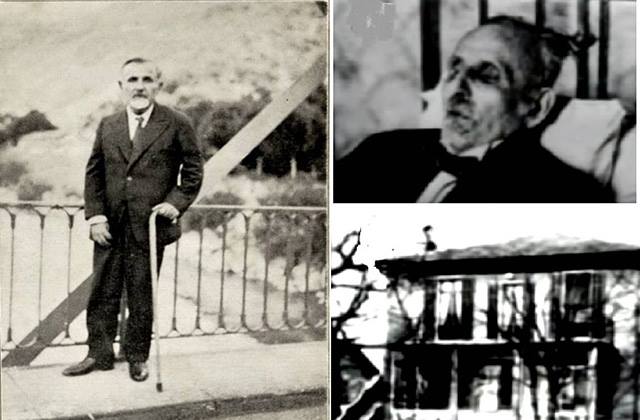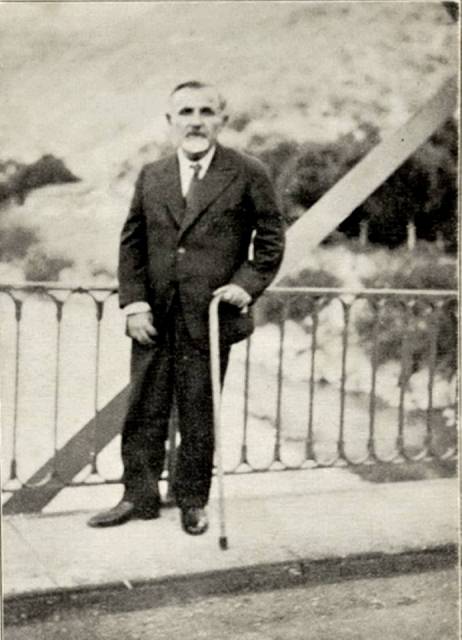
Murderous Attempt against Avetis Aharonian

Prominent historical events have always been accompanied at the first sight with insignificant, seemingly episodic events, which however, left their traces both on time and human destinies. And if they were frequently forgotten, it also had its reasons. Such an “ignored” incident is introduced below, which refers well-known Armenian writer, chairman of National Assembly of the First Republic of Armenia Avetis Aharonian.
Aharonian, who headed Armenian delegation in Armenia-Turkey negotiations in Constantinople (1918), Paris Peace Conference (1919), London conference (1921) and signed the Treaty of Sèvres (1920), and was living in Paris in 1921. In winter of that very year unexpected news was circulated: a murderous attempt has been recorded against Avetis Aharonian. Information was so patchy and contrasting that at first it seemed few people believed in its authenticity. A bit later first edifice and official statements were obtained.
According to those publications, on January 26 and Armenian named Ter-Zakarian entered Aharonian’s apartment on Marceau Street of the city, threatened him, and then shot from the gun. Fortunately, he missed, after which he was detained. Everybody, first and foremost, was concerned what was the reason of the attack, however, the most disappointing was the fact, that the shooter was Armenian, and not a foreigner.

Avetis Aharonian
In the following days new details were available fulfilling the gap of stingy news. First, they wrote that Alexander Ter-Zakarian went to Aharonian’s place to ask for money to leave for the U.S. from France and he shot he after he was rejected. Then there was information that during the interrogation he informed the investigator that his own misery instigated him to such crime. But the most curious were the following words, “I came to Paris hoping to find a good life here, meanwhile through hard work I’m only able to earn my living. That’s why I decided to revenge in name of me and my compatriots, by killing the chairman of our national assembly, who lead Armenians to starvation.”
These words were totally enough, that political opponents of Aharonian and ARF (Armenian Revolutionary Federation) took those words and waved like a flag before them as a proof for their prevalence and reminding of the fact that ARF has led Armenia to destruction. It’s already worth noting that, in particular, in early 1920s many had the concern, according to which one of the guilty for losing the Armenian Case was Avetis Aharonian, as he, one of the prominent figures of the political party, had the most active participation in crucial events of national and political life. And in Armenia after the establishment of the Soviet Union, under the sharpening ideological struggle, that thesis was being more frequently circulated.
Thus, when it became known a few days later, that author of the murdering assault was also a member of the ARF and seemed to fight against the Turks as a volunteer, the snapshot obtained new hues.

The house where Aharonian lived
In that period local press continued to regularly touch upon the process of the case, and day by day increasing facts were making certain formulations in initial perceptions. For instance, they wrote that Ter-Zakarian vsited that house for that very claim and left with no result. And on the day of the incident, contrary to interference of the servant, he managed to get to Aharonian’s room and claim 1500 francs. After he was rejected, he took the gun from his pocket, but before he shot Aharonian succeeded to hold on his arm and he shot to the wall.
After some period French media outlets appeared with more expanded publications, where the subtitles attached attention: “The murdering assault, which was about to kill head of Armenian delegation Mr. A. Aharonian, had no political purpose.” After such qualification the periodicals were providing results of the investigation by the Police Commissar M.Simon, pursuant which Alexander Ter-Zakarian was a former student, was studying in Petrograd, and when the revolution was initiated he had to return to Yerevan.
“Eight months ago he came to Paris to continue his studies. But being short of money, he repeatedly asked for money from A.Aharonian, who supported him many times. The latter even provided a pass for Ter-Zakarian to return to his country. But he didn’t leave and continued to visit the Marceau Street, where the house of Mr. Aharonian was located and ask for money. Mr. Aharonian demanded to invite him out. Ter-Zakarian made a few attempts to enter, but he failed. For the last time, pushing the servant, he entered into the room of Mr. Aharonian and demanded 1500 francs. Mr. Aharonian refused to give. That time by taking the gun from his pocket, he posed it to Mr.Aharonian. Fortunately, he saw his movement and succeeded to miss the bullet by taking him by the arm. Making use of the messy situation Ter-Zakarian escaped to the street, however, the servant ran after him, and took him to the police,” one of the newspapers reported.

Last photo of Aharonian
Criminal case was initiated against the author of the murdering assault. This time Aharonian’s opponents made a noise that he doesn’t have that much indulgence to let the miserable young man go. Ter-Zakarian was detained until autumn, then his case was launched in late September. And only after that it became clear that wish of Avetis Aharonian was to be free from political accusations. Like one of the newspapers wrote those days, “Ter-Zakarian confessed that he intended to kill Mr. Aharonian out of political reasons. He was reasoning, that Aharonian, as head of Armenian delegation, wasn’t the representative of the majority of his compatriots.”
It’s noteworthy that during the trial the prosecutor, demanding not such a severe punishment, at the same time reminded the foreigners, that there is no need, “to settle their political issues on the French ground.” Finally, the court sentenced Ter-Zakarian for one year in prison and obliged the dissatisfied party to pay one franc, as compensation.
Thus, this is how the incident ended, which was being touched upon in Armenian press for a lasting period, from time to time bearing simply legal character, and sometimes being accompanied with sharp political sarcasm. And the destiny of the student remained unknown.
By Hovik Charkhchyan






















